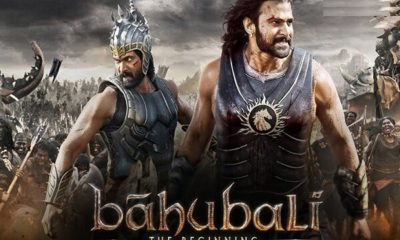Life Style
How to Identify Male and Female Cockroach? Know all About

Cockroaches comprise among the frequent bugs that are that are found in Indian homes. They’re not just disgusting to be around, but they also carry bacteria and viruses. While many people view them as insects, the entomologists (insect experts) and even pest control professionals frequently have to determine if they are gender-specific or male. Incredibly, there are distinct distinctions between them if you are aware of what to look for.
The article we’ll look at the behavioral and physical characteristics that aid in distinguishing female and male Cockroaches.
Dimension and Shape of the Body
One of the most effective methods to distinguish between female and male Cockroaches is to look at how big their dimensions of their bodies:
- Male Cockroach: The majority of them are smaller, slimmer in weight and less in weight. Their abdomens appear slimmer and is more pointed.
- Female Cockroach: Larger in weight, heavier, and wider in appearance. Their abdomens are rounder and has a larger size.
In a nutshell female cockroaches are generally larger than male cockroaches.
Wings
The wings of female and male Cockroaches differ in the majority of species:
- Male Cockroach: The wings are larger over the entire body that cover the abdomen completely and stretching over the. Males are more agile and more adept at flying.
- Female Cockroach Their wings tend to be shorter or are equal to the length of the body and they may not completely over the stomach. Females aren’t often flying and, in certain species their wings aren’t fully developed.
Antennae and Movement
- Males are characterized by larger and more tinier antennae that are used to recognize pheromones coming from females. They are more active and move faster.
- females are blessed with slightly smaller antennae and appear more relaxed in comparison to males.
Abdomen Segments
Examining the inside of the abdomen of the cockroach can reveal a variety of distinct differences:
- Male Cockroach: The two ends that make up the abdominal are clearly visible as well as pointed.
- Female Cockroach The last segments are typically obscured by the wider abdomen and are therefore less obvious.
Cerci as well as Styli (Tail-like Structures)
The end in the stomach, these cockroaches possess tiny sensory appendages known as cerci and for males, an additional structure known as styli is found.
- Male Cockroach: It has cerci (pair of long projections) and also styli (shorter bristle-like structure) on either side of the abdominal section that is the final one.
- Female Cockroach It has just cerci but no styli.
It is one of the most reliable biochemical identifiers of sex among cockroaches.
Reproductive Features
- Female Cockroach Creates an tootheca (egg cases) that she transports or places in secure locations. If you spot an cockroach that has a capsule-like enclosure attached to its abdomen, it’s certainly a female.
- Male Cockroach: Does not produce the ootheca. Their main function is to fertilize female.
Behavioral Differential
- males have more fun and frequently wander through the streets looking for food or companions. They are often seen flying through the night sky.
- females are more cautious and prefer to hide in dark areas to guard themselves and their eggs.
What is the reason identifying male Cockroaches as Female and Male
- Pest Control: Female cockroaches lay hundreds of eggs, causing infestations. Recognizing them can help in identifying the root of the population expansion.
- Scientific Study: In labs, scientists investigate male and. female cockroaches’ behavior for control of pests.
- Awareness for homeowners understanding the difference is what explains the reason why cockroaches breed quickly. This is because one female can have numerous offspring.
Conclusion
Recognizing the male and female species of cockroaches not difficult once you recognize the indications. Males are smaller and slimmer with larger wings and styli. Females are larger, broader with shorter wings, but styli that aren’t there. Females also have eggs in eggcases (ootheca) which makes them easier to recognize.
When one is aware of these differences it is easier to monitor infestations at home and implement appropriate measures to control pests. The female cockroach is the primary reason for the rapid increase in population Knowing how to identify her will aid in pest control.
Life Style
How to Identify Original Shakha Pola? Complete Guide

According to Bengali tradition, Shakha Pola are traditional bangles that are made from Conch Shell (shakha) along with Red Coral (pola) and used by married women to symbolize marital status, wealth, and a sense of cultural identity. These bangles go beyond simple ornaments; they have a the significance of a religious and cultural tradition especially during festivals and rituals such as Saptapadi or Sandhi Puja. Due to their increasing popularity, there are many counterfeit Shakha Pola are sold in the marketplace. The identification of authentic shakha pola is vital for ensuring authenticity, long-lasting and the value of traditional values.
Know the Content
- Shakha (White Bangles): Constructed out of the natural shell of conch authentic shakha has an extremely smooth and glossy surface that is solid yet light.
- “Pola” (Red Bangles): Traditionally made out of the red coral however, modern versions can also be made of synthetic or lac materials.
- The authentic shakha and the pola authentic shakha and pola are authentic and are organic unlike fake versions that usually employ resin, plastic, and dyed substances which are hard or excessively shiny.
Texture and Color Texture
- Shakha Original: Pure white, creamy or off-white. Surfaces are slightly rough and rough which is a reflection of its organic ancestry.
- Fake Shakha White pure and completely uniform, typically it is a sign of fake bleaching or plastic.
- Initial Pola A bright red with an natural warm hue. Genuine coral could be characterized by subtle variations in color which can add authenticity.
- Fake Polia: Bright red plastic or painted bangles that appear too similar and fake.
The Weight Test
- Shakha that is real is light but sturdy and firm, whereas red coral is a bit heavier due to its density.
- Fake materials can appear heavier (if made from resin) or they may feel too thin (if the material is made from plastic), giving away their fake nature.
- Keep the bangles in place; organic shakha and the pola should feel even and comfortable on the wrist..
Sound Test
- Simply gently tap the two shhakha beads the original conch shell creates an natural, soft sound of ringing.
- Fake bangles, particularly made of made of resin or plastic, create the sound of a hollow, dull or loud sound.
- Similar to taps on the coral red (pola) will produce an moderate but solid sound that indicates dense organic material.
Check for imperfections
- Original shakha is characterized by small natural flaws or streaks which are indications of authenticity.
- Pola might also show tiny color irregularities or the surface texture.
- Fake bangles are often too glossy, smooth and uniform that is an indication of fake production.
Durability Test
- Genuine Shakha or pola materials are resistant to cracking and chipping in regular wear.
- But fake and resin-based bangles tend to be much more soft and more prone to break when they are dropped or gently pressed.
EXPERIENCE Test
- Original shakha and Coral are non-odorous or have an earthy scent that is very mild..
- Fake bangles made from synthetic materials could contain some chemical odor or a plastic-like one in particular when they are they are brand new.
Cultural Markers and Craftsmanship
- Genuine shakha pola are often sourced from known Bengali craftsmen and can contain classic designs, or engravings.
- Fake bangles lack artistic craftsmanship of the traditional and look mass-produced using basic patterns or shapes.
Rapid Comparison Table Original vs. False Shakha Pola
| Feature | Original Shakha Pola | Fake Shakha Pola |
| Material | Conch natural and coral red | Plastic resin, synthetic |
| Color | White and creamy (shakha) Natural red (pola) | Uniform bright white and red |
| Texture | Slight natural unevenness | Too glossy and smooth |
| Weight | Firm, balanced | Too heavy or light |
| Sound | Ringing that is natural and soft | Dull or rough |
| Imperfections | Natural streaks, minor variations or minor variations | Absolutely uniform |
| Durability | Strong, durable | Brittle and easily breaks |
The Final Words
To identify authentic shakha pola, it requires careful consideration of the materials colors and texture, as well as weight, natural imperfections and sound. Genuine bangles have not only aesthetic and cultural value, but also a spiritual significance for married women of Bengal. When you purchase from authentic merchants or authentic stores will ensure that you receive authentic shakha polos that are a testament to tradition, durability and class.
Life Style
Traditional Dress of Nagaland For Men and Women

Nagaland is one of the rare states of India which is famous for its indigenous people and their culture. The tribal culture is celebrated as an annual festival in the state and from the outside it’s stunning to see. The dress is especially stunning! It is distinctive to the majority of people. Today, we’ll be discussing the dress part in particular. In this article, we’ll discuss what traditional dress codes that are typical of Nagaland are, as well as the way the different tribes dress their clothes in unique and different ways. We’ll take a look.
Common Elements Across Naga Dress
Sure, tribes have diverse extremes, however there are some cool features that can be found in nearly all Naga outfits.
- Shawls Large pieces of fabric that are tossed around on the shoulders. Each tribe has their own unique designs however.
- Patterns and Symbols Some have shawls that feature things like tiger, spear, or elephant quite stylish, actually. The symbol symbolizes understanding of wealth, power and success, no doubt.
- Colors: The common colors include red, black white, dark blue.
- ornaments:Naga People love accessories like cowrie shells and beads, feathers or even bone. Fascinating! Decorated pieces are what gives these clothes their uniqueness and elegance.
- Hand-Made Stuff The majority of these clothes are made by hand, using incredible tools such as the loin loom.
Traditional Dress of Men in Nagaland
1. Shawls (Different Tribe Vibes)
- Ao Tribe (Tsungkotepsu): Well, in Nagaland it is known as the shawl worn by warriors. It also features elephants and tigers, which are emblems of strength and courage.
- Angami Tribe (Lohe): Pretty nice-looking cloth with yellow and red bands. The symbols depict the tale of a man’s life and his huge wins or the rewards of his success.
- Lotha Tribe (Lungpensu): Pretty cool dark blue shawl that has lighter blue lines. This is a shawl for guys who have enjoyed unforgettable meals within the villages.
- Yimchunger Tribe (Rongkhim): This is another fascinating shawl that has designs of red squares and is a tribute to the blood of someone who killed enemies. It’s pretty wild. This is certainly for hard-core warriors.
- Sangtam Tribe (Supong): This one isn’t just the basic one, it’s primarily reserved for the extremely dignified members within the tribe.
- Rongsu Shawl This is for men from the Ao tribe, whose families gave the sacrifice of a special animal called Mithun during a tribal ceremony.
2. Kilt
It’s just a dark fabric, akin to the kind of skirt that is only for guys, but a lot more charming. Then there are cowrie shells scattered around They are believed to bring luck in war and love very and a bit extreme. It is a fact that men can make it by themselves.
3. Fancy Alungstu
Brightly colored in yellow, with flower designs, extremely cool, if you are interested in us. This is for all the buffs out there, don’t you think? These are made by some truly talented craftsmen and therefore, they are of prestige for the guys who wear it.
4. Rhikho & Moyer Tusk
- Rhikho Plain black and white stripes. Pretty cool. For people who haven’t had the opportunity to do major-deal things, definitely.
- Moyer Tusk A super dark, blue fabric with a an edge that is zigzag. Simple enough for everyday males, definitely.
5. Wedding Dresses for Grooms
The men who are getting married wear Mechala that is kinda dipped and embellished with lovely tribal images absolutely. The kilts are dark with cowrie shells, and cool jewelry made from bones and beads, oh it’s just a way to level things and looks amazing too. It’s really a stylish and a great combination of tradition, style and pride.
Traditional Dress of Women in Nagaland
1. Azu Jangup Su
The stunning yellow and crimson skirt worn by girls on important days is stylish, without doubt. It’s all about having happiness and enjoyment.
2. Mechala
Bone-length wrap of cloth tossed on as a skirt or shawl Pretty stylish too. It’s adorable with stunning designs. You will definitely see it at weddings as well as other major celebrations.
3. Neikhro
It’s some kind of Petticoat-like attire worn with skirts. Pretty stylish. Its flashy patterns and bright colors represent the girl’s tribe, or community, or family.
4. Moyer Tusk
Yes women can wear Moyer Tusk also and it comes with very basic designs; It is, however, a dark blue cloth with the Z-shape pattern. It is a simple, yet surprisingly unique.
5. Bridal Dresses
Thus, an Naga bride typically wears an attractive Mechala Shawl, sparkling ornaments, and often the appearance of rice on their face. It is also possible to wear an item of jewelry that’s been in her family since the beginning of time, completely. It’s extremely traditional and personal certainly.
Life Style
Traditional Dress of Odisha For Men and Women

If you’re thinking of going to this region of Odisha state, it could be due to the numerous temples that are located in the state, don’t you think? But, aside from this, there is another reason to visit the state. That is to simply discover and experience the tradition of the place. The first sign of that is when you observe the multitude of people in traditional dress of Odisha. Today, we’re going to discuss exactly this.
Women’s Traditional Dresses in Odisha
1. Sambalpuri Saree
So, you know that the Sambalpuri saree is very well-known across Orissa. It’s created in this amazing style known as Ikat which is where it is dyed to the thread before weaving. The sarees typically have appealing designs, like bicycles, flowers and peacocks. The most sought-after colours are black and red for obvious reasons! In addition, the saree is believed to be the closest in the worship of Lord Jagannath and is an important feature in Odisha.
2. Bomkai or Sonepuri Saree
The sarees are designed with the intricate blend of Ikat designs and techniques for embroidery and handwork that is meticulously done. The design of the body will be plain, with a very intricate-designed pallu to the bottom. Furthermore, the colours tend to be bright, such as blue, red, and yellow, with a level of tribal art and design.
3. Berhampuri Patta Saree
This saree belongs to Berhampur which is a fantastic city with the name of Silk City. For stunning temple designs on the borders or during Puja women can typically wear it for weddings and festivals. It is usually paired with a joda, or you know, a coordinating cloth for the males who are in state.
4. Pasapali Saree
This saree features an incredibly distinctive checkerboard pattern. It’s made of the double Ikat thing, and everything. It is extremely striking and vibrant often. Yes, the name is actually derived from pasa, which is a dice game. This is because the design is pretty amazing as a game on a board.
5. Khandua Saree
Okay, so the new types of sarees are made of silk and offer an overall smooth and shiny appearance. All women wear it for large-scale celebrations and religious events generally. Other options for colors include red or orange, yellow, as well as others.
6. Kataki Saree
The saree you see here is made in Cuttack where one can see extremely intricate and rich traditional designs. It is typically worn to celebrate pujas and religious events.
Accessories and Styling
Uttariyo
This is the incredibly long fabric that is draped over the head of women who wear lehengas or sarees, mostly for festivals or weddings. The weave looks great with the golden threads called Zari.
Jewelry
The women wear gorgeous silver jewelry and bead jewelry and brass jewelry, everything. There is also the extremely old silverwork known as Tarakashi It is extremely precise and around five hundred years old. Coin necklaces display of wealth, and surely enough, nose pins are able to keep the evil eye from.
Dressing for Different Occasions
Brides at weddings typically wear stunning yellow sarees, with bordering in red. Sometimes, they wear Sambalpuri, Khandua, or your Banarasi kind of sarees. They are very attractive in truth. For celebrations, people dress in bright sarees, with interesting designs. For everyday wear, it’s more basic cotton sarees. Simple and easy!
Men’s Traditional Dresses in Odisha
1. Dhoti
One of the advantages in the traditional dhoti dress is the fact that it’s an oversized cloth that wraps around the body, like legs, waist and so on. In Odisha the dhoti is very attractive with the border being a vibrant red or brick colour. It is true that it is worn by males for various occasions, including ceremonies, festivals as well as in everyday life.
2. Sambalpuri Kurta
A kurta is an extremely long-sleeved shirt. The very brand-specific Sambalpuri Kurta: it is made with that same cool Ikat stuff as the sarees-with-square-patterns-and-all kinds. It’s, thankfully, mostly worn during celebrations and big events.
3. Pyjamas
The pyjamas are essentially pants that are worn with the kurtas. They are comfortable and soft, mostly basic white and the majority of them are.
4. Sherwani
This sherwani is a popular dress worn by males for weddings. It’s not exclusive to Odisha Men generally opt for this attire throughout all of India. It can be paired with the turban, pyjamas and so on.
5. Pheta
The Pheta is the most regal piece of cloth tacked onto the head to mark occasions like weddings, celebrations and so on. It’s just pretty and is essentially.
6. Gamchha
Gamchha as it’s widely known is a gorgeous cotton dhoti-like fabric, typically with vibrant checks, tucked on the back or around your neck and is a great way to wash off sweat. It’s a major part of Odia culture.
-

 Entertainment7 years ago
Entertainment7 years agoDownload Hindi Mp3 Songs
-

 Business7 years ago
Business7 years agoHow payday loans are becoming the preferred mode of choice
-

 SEO & Digital Marketing7 years ago
SEO & Digital Marketing7 years agoGenerate More Views on Your Instagram Profile with Cool Graphic Designs
-

 Auto6 years ago
Auto6 years agoWhat are Some Budget Friendly Bikes in India?
-

 Entertainment7 years ago
Entertainment7 years agoTips and tricks for safe winching
-

 Entertainment7 years ago
Entertainment7 years agoHow might Super Hero Thor going to help other Avengers in the Avenger4?
-

 Entertainment7 years ago
Entertainment7 years agoAmusement and Water Parks to Visit in Delaware
-

 Entertainment7 years ago
Entertainment7 years agoTop Websites To Download Bollywood Songs And Music Free Online











